FOIPPA Backgrounder for Seesaw
What is Seesaw?
Seesaw is an online digital portfolio, which empowers students and families to document their learning.
Why am I using Seesaw?
STUDENTS CAPTURE THEIR LEARNING IN ANY FORM
Students and families can “show what they know” using photos, videos, drawings, text, PDFs, and links. You can also import directly from most popular apps, like Google apps.
COLLECT STUDENT WORK FROM ANY DEVICE
Seesaw makes it easy for students and teachers to review progress over time and demonstrate growth. When students add to their Seesaw journal, content is uploaded, organized by student, and immediately accessible to teachers from any device.
Personal Information Involved Using Seesaw
An essential part of our mission is providing a service that keeps students safe, and puts teachers and parents in control of how student information is shared. We’ve adopted the following Privacy Principles to summarize our privacy commitments to you.
- We don’t own the content you provide – students and their schools do.
- Student work is private to the classroom by default. Teachers control what is shared and with whom.
- We will never advertise to students, create student profiles or sell any user data.
- We use security industry best practices and routinely monitor our systems to protect you.
- We are transparent about our practices and will notify you if things change.
- We are COPPA and FERPA compliant.
Risks that could arise
Seesaw uses a number of geographically distributed servers in order to deliver a high-speed service around the world. This is true of many services you may use, including services like Google Apps for Education. While our primary data storage is in the United States, temporary copies of data may be cached near the person requesting that data to improve performance.
What’s ‘personal information’?
“People have different standards of what they consider ‘personal’ information. Sharing over social media has done a fair bit to reset our expectation. Regardless of personal definition, if the information, data, or content could be used to identify you, it’s ‘personal information’ – though professional or business contact information may be treated separately.” (Hengstler, 2013). A student’s personal information could include: name, date of birth, address, telephone number, email address, educational information, and anything that identifies an individual, including photographs. If any information, data or content could be used to identify you it is then qualified as “personal information”.
Why is BC so sensitive to privacy laws regarding data?
“Shortly after the 9/11 attacks on the US in 2001, the American government enacted the United States Patriot Act that allowed the United States government to search private and public data housed on servers on United States soil. At the time, The British Columbia Medical Services Plan was hosting our provincial medical records in the United States. Unions in British Columbia expressed concern over the ability of the American government to search through British Columbian’s personal medical records and histories. Ultimately, the rules is: if you transfer or authorize the transfer of your personal information outside of Canada, that data is subject to the laws and practices of the country where it sits – be it the United States, China, or India. (Remember that minors, under the legal care of an adult, cannot authorize such a transfer.) Not all locations have similar notions about your right to privacy. Since cloud computing is a relatively new technology, the laws and best practices governing it are still changing and there is a need to stay current” (Hengstler, 2013).
Why is a consent form necessary?
Various provinces in Canada – and other jurisdictions across the world – have enacted laws to protect personal privacy. In BC, the Freedom of Information and Protection of Privacy Act (FIPPA) covers all public schools. It is one of the most defined privacy protection frameworks in Canada. FIPPA states that ‘public bodies’ such as public schools have defined legal requirements for handling your personal information when it is within their ‘custody’ and ‘control’. Generally, public bodies must make sure that your personal information cannot be stored, accessed, or disclosed outside of Canada without your express consent (Note: there are certain expectations in the law like data covered by treaties, etc.). FIPPA states that your consent must be in writing, state to whom your personal information may be disclosed, and how your information will be used. Also, if you post personal information about others, their permission must also be secured.
What if I don’t want to consent?
You have the right as a parent/guardian to withhold consent to your child using Seesaw. Alternate activities will be provided to students in the event that parents/caregivers choose to withhold consent and that selection of an alternate activity will not affect a student’s grade.
Managing Risks
While no internet-based experience can ever be 100% risk-free, know that I will take every reasonable measure to manage expected risks. The following are steps that are being taken to manage potential risks while using Seesaw.
Seesaw takes protecting your security and privacy seriously and have placed a number of measures in place to protect the integrity of your information.
- A robust set of Privacy Principles designed to clearly communicate our privacy promises to our teachers, parents and students.
- Seesaw uses SSL security at the network level to ensure all account information and journal content is transmitted securely.
- Account information is stored in highly secure, access-controlled data centers operated by industry leading partners with years of experience in large-scale data centers.
- Seesaw is used school- and district-wide in Australia, Canada, the UK and the EU with these guidelines in place.
For more information, please visit: https://help.seesaw.me/hc/en-us/categories/115000882023-About-Seesaw
Informed Consent
Dear Parents:
This school year, our class will be using Seesaw, a secure online learning journal where students can create and upload artifacts to document their learning. Your child will add things like photos, videos, worksheets, drawings and voice recordings to their Seesaw journal. If you choose, you can also sign up for a Seesaw Parent account to be notified when your child adds new content and have access to their journal. Seesaw journals are private and only accessible by the teacher, students, and parents.
In order for your child to use Seesaw, we need your permission. Because of the nature of the service, Seesaw does collect personally identifiable information, like your child’s name, and photos, videos or voice recordings made by your child. Seesaw has a robust privacy policy (https://app.seesaw.me/about/privacy) and has committed to never share your child’s personal information or journal content.
I hope that your child will enjoy using Seesaw to document and share their learning this year. You can learn more about Seesaw by visiting http://web.seesaw.me/

